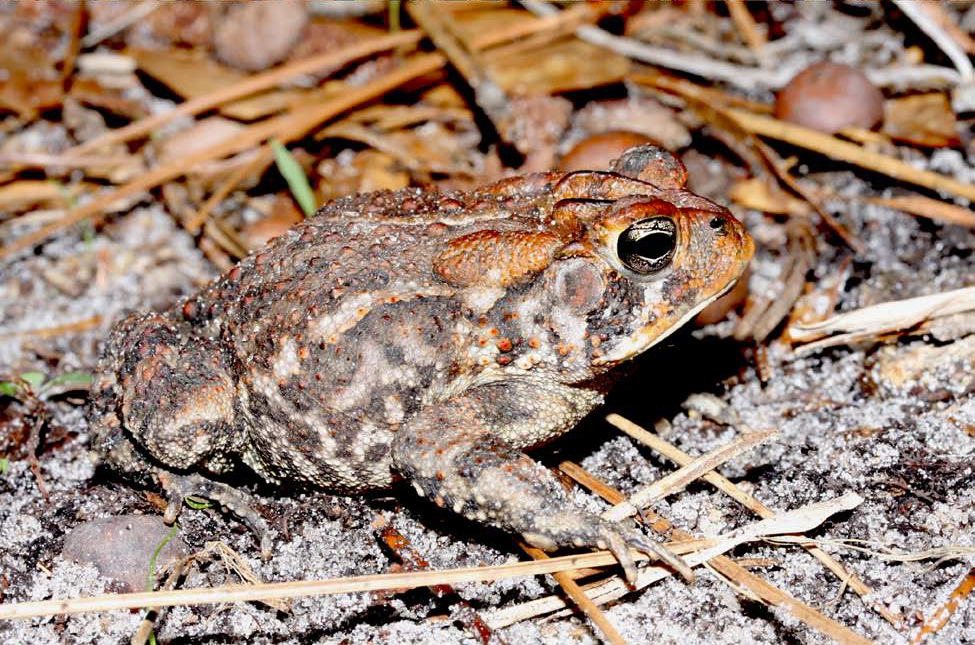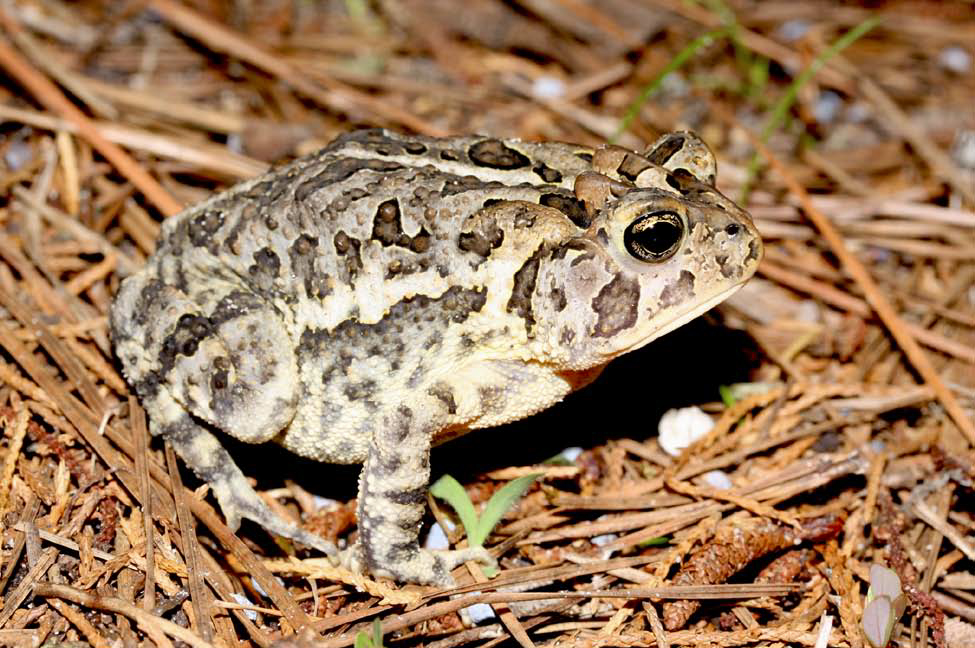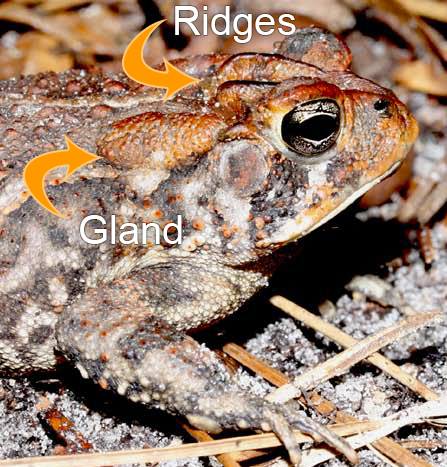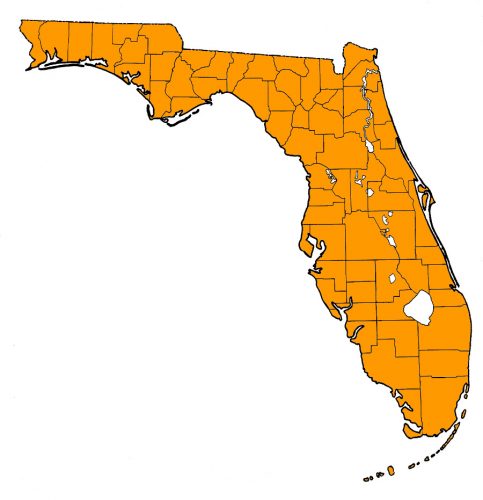Southern Toad – Discover Herpetology - Florida Museum
Scientific name: Anaxyrus terrestris
These stout toads are plentiful throughout Florida, but can often be confused with the invasive Cane toad. Southern toads are nocturnal omnivores that come out of their sandy burrows to eat—well, pretty much anything they can get in their mouths.
Appearance
Medium-size, squat and plump, they're usually 1.5 to 3 inches long but have been found over 4 inches long. Color varies from tan to reddish brown to gray, with darker spots and splotches, and lighter underbellies. Their skin has an irregular warty texture, with multiple warts within each dark spot, some of which are rough or spiny.

Southern toad, Anaxyrus terrestris. Florida Museum photo by Kenneth Krysko

Southern toad, Anaxyrus terrestris. Florida Museum photo by Kenneth Krysko

Alert! These toads look like the invasive Cane toad. A major difference is that Southern toads have noticeable ridges on their heads that end in big knobs behind their eyes, while Cane toads have relatively smooth heads without pronounced ridges or knobs.
Behavior
Southern toads are nocturnal and can be found burrowed in sandy soil or debris. They are urbanized and quite comfortable in yards, parks and other human environments near a water source. During the breeding season they migrate from their normal habitats to lowland water bodies. Rains set off more calling, and their chorus becomes quite loud at a populated pond or swamp.
Sound
Southern Toad (Breeding Chorus)
Food
Insectivores. They eat mainly crickets, roaches, snails and other invertebrates.
 Habitat & Range
Habitat & Range
- Mainly the southeastern United States (from southern Virginia into Florida and west into Louisiana)
- Florida: Statewide except for the upper Keys. Native.
- They are terrestrial, which means they live at ground level, usually under debris or in burrows.
Notable
When threatened, Southern toads make themselves look large and tip their heads downward to expose their parotoid glands to would-be predators. The parotoid glands produce bufotoxin which can be toxic or foul-tasting to different predators. Their eggs are also coated in toxin.


Comments
Post a Comment